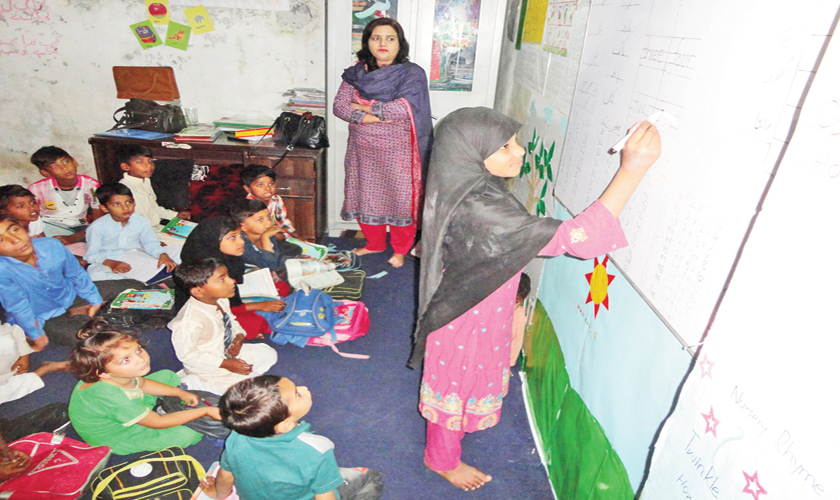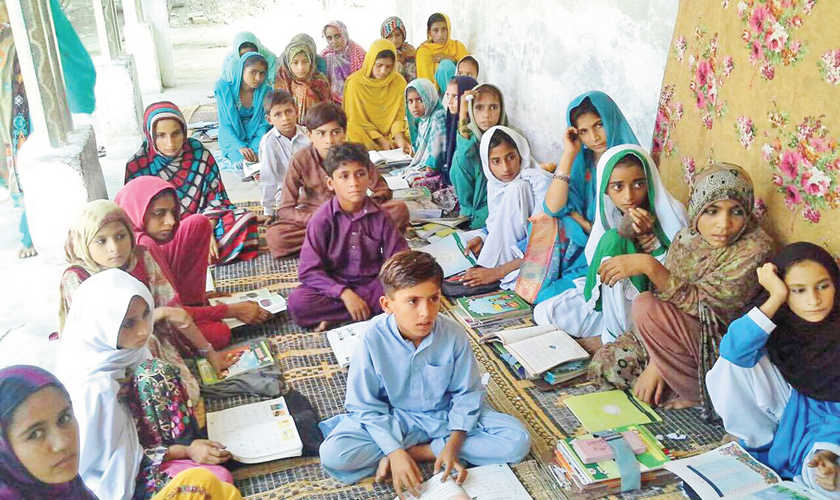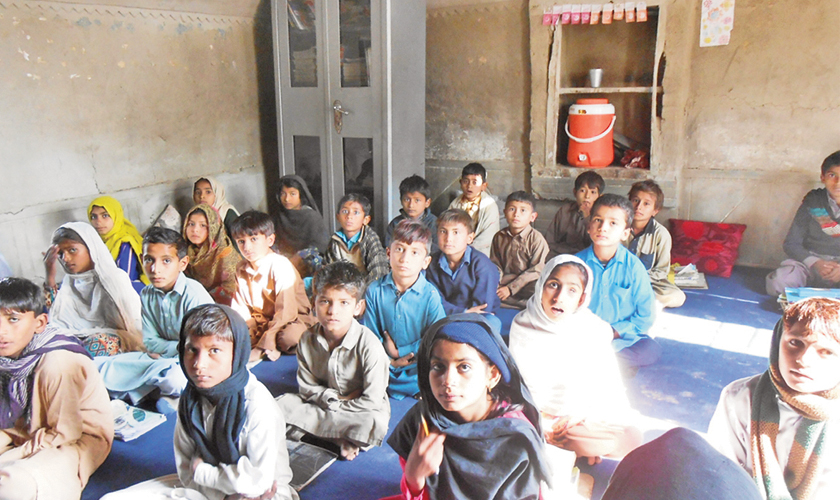Under YCHR’s Home School Education Programme, 20 home schools have been established in District Muzaffargarh and Lahore for underprivileged children. You! takes a look...
Under YCHR’s Home School Education
Under YCHR’s Home School Education Programme, 20 home schools have been established in District Muzaffargarh and Lahore for underprivileged children. You! takes a look...
Sawera Anees is 10 years old and belongs to a Mewati cast. Her family is quite conservative and does not allow girls to step out of the house, even if they want to go to school. Sawera’s family follows the typical mindset that girls should stay at home and look after household chores and take care of other family members. The locality where Sawera lives is called Basti Malik Munir Park. The basti falls in the jurisdiction of Union Council Shibli Town in Samanabad, Lahore and comprises approximately 700 households. The total population of the locality is estimated to be around 2,000. Though the locality is an urban area in the capital of Punjab province, it is a pity that a small group of school-going children attend school. One of the major causes is that the residents belong to low-income group and find it hard to pay the cost of education of their children. In many cases, it is beyond their reach to buy books, stationery and uniforms.

And it was due to these reasons that Sawera was not sent to school for a long time. But now the situation is a little different and Sawera is studying in class two. For her it is nothing less than a dream come true. She could never imagine that her family would allow her to attend school but what had happened was simply amazing.
But here the question arises, how did this happen? Basically, Sawera became a beneficiary of an educational project launched by a non-profit organization, Youth Commission for Human Rights (YCHR), that visited the area with an intention to set up a home school there. The idea was to involve the local community in the process, identify a female teacher from the locality and set up a school in some space provided by either the teacher or some other person in the area.
The YCHR was supposed to pay the salary of the teacher and provide books and stationery, set up a library, train the teacher, pay cash prizes, rewards and incentives to high performing students and so on. After initial hiccups and some reluctance shown by the locals, the idea was materialized and the school came into existence last year.
“Under the organisation’s Home School Education Programme, 20 such schools have been established in District Muzaffargarh (Muzaffargarh & Kot Addu) and Lahore (15 in Muzaffargarh and 5 in Lahore) for enrolment of about 600 out-of-school children between 5 to 14 years over an 18-month period. The project has been executed with financial assistance coming from the United States Agency for International Development’s (USAID’s) Small Grants and Ambassador’s Fund Programme. The project was launched in March 2016 and has achieved several major goals,” shares Shazia Khan, Chief Executive Officer (CEO), YCHR.
After an extensive training, the home school teachers with their devotion and door to door mobilization enrolled 1006 students (400 boys & 606 girls) against the total target of 600. “The fact that more girls than boys were enrolled was a feat in itself,” she adds.
According to Shazia, home schools have proved to be successful for several reasons. “They provide an excellent opportunity for education of out of school children right next to their homes and help them overcome inhibitions of all sorts. The cost incurred on setting up home schools is low. This helps female teachers establish such facilities in their localities and enrol students, especially girls. Families that do not want to send their girls to formal schools feel they are safe when taught by a female teacher living in their neighbourhood.”

“They offer the flexibility to learn the five-year primary education course in 2 to 3 years. Due to this, the children who have missed early years of education cam make up for their loss. These schools provide an informal setting such as no formal uniform requirement where children of poor families can attend the school in any clothes. Timings can also be flexible. The apprehensions about spoiling of children at schools are also not there because people can visit there any time and monitor the activities,” she elaborates.
Another major benefit of home schools is that multi-grade teaching is possible and children belonging to different age groups and grades can study together. Due to this, many children who missed early years of education were able to get admission in formal schools according to their age group.
The example of 15-year-old Javeriya, daughter of Muhammad Babar, is quite relevant here. A resident of Akram Park, Bund Road Lahore, Javeriya couldn’t attend school because of financial constraints. Javeriya got admission in Play Group at a school when she was 14. The students less than half her age started making fun of her. She felt offended and left school. After the establishment of home school in her area, she got admission in class one on June 15, 2016 and within months was promoted to class three. It is quite likely that she will get further multiple promotions and cover the gap before going to a formal institution.
The case study of Muhammad Mursleen, 14, a resident of Basti Mashoori Wala, Kot Addu, Muzaffargarh is also quite motivating. Son of a labourer, he had to leave school early as his father’s financial condition worsened. One day Sadia Sagheer, a home school teacher, visited his house to convince his parents to send their children to home school. The parents agreed and what followed was amazing. Mursleen joined home school and after some time appeared in the class five exams administered by the Punjab Examination Commission (PEC). He passed the exam and obtained 411 marks out of 500 marks.
As per details of the project, a prior survey was done in Muzaffargarh and Lahore before the launch of home schools. Different bastis in Muzaffargarh were visited, while in Lahore river shore (along bund) areas were chosen. People in these localities do not have access to basic necessities like health, food and education. Women here are mostly factory workers and they leave their young girls at home to take care of other children rather to send them to school. Moreover their income resources do not allow them to avail educational facilities being provided by private sector.

Sadly, the survey revealed that these targeted areas have remained out of the list of any developmental plan by the government. The results indicated that among 750 families surveyed in Muzaffargarh, 748 reported their children were of school going age i.e. 5 years or above. While children of 81 families were going to school, those of 667 families were not. This meant 89 per cent children who were supposed to be in school were out of school in targeted areas of Muzaffargarh.
The situation was slightly different in Lahore with 61 per cent of the population out of school. Out of 250 families approached for the survey, 234 reported their children were of school going age. Only 91 families reported their children were going to school while 143 families said their children were not attending school.
Regarding the project, Khizer Gilani, SGAFP’s Field Operations Officer for Punjab province, “Strict monitoring is done to ensure the quality of education at home schools. School Management Committees (SMCs) that also have parents on board, have been formed for this purpose. Surprise visits are made to make certain that there is no compromise on the quality of services.”
Moreover, local influential persons, local government representatives etc are in the loop and talks are underway regarding sustainability of these schools once the project cycle is finished. “At some places they have already agreed to run these schools themselves which is highly encouraging. Hopefully, similar arrangements will be worked out at the remaining locations,” concludes Khizer Gilani.